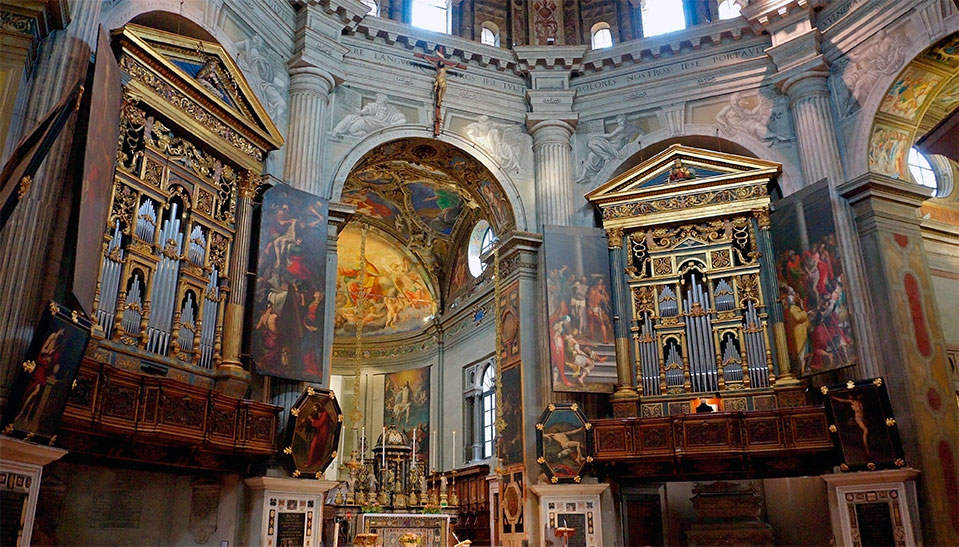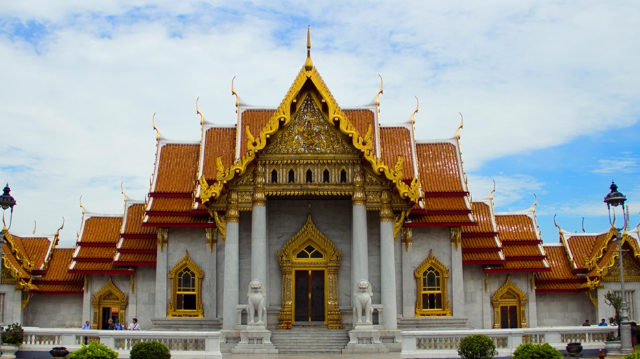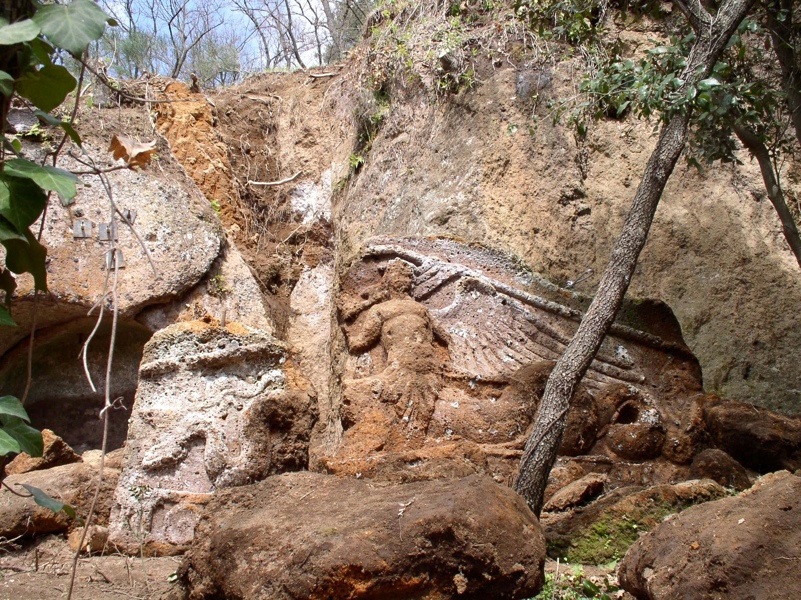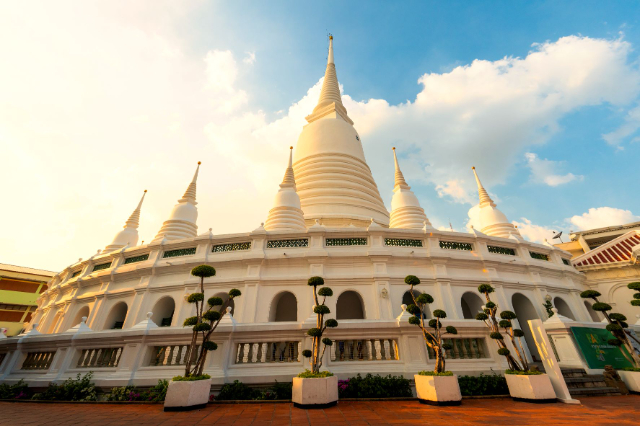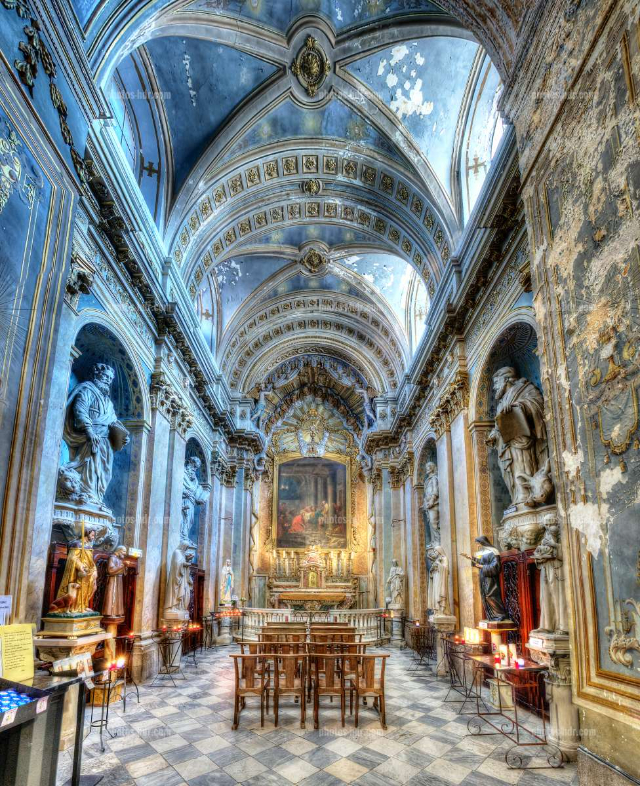The new church of St. Spyridon stands on the same place as the ancient and homonymous eighteenth-century temple built by the "Greek nation" – at that time including the "Illyrians" – which had to be demolished in 1861.
The Community, wishing to build a particularly important temple, announced a public competition already in September 1858, to which the most renowned architects from Vienna, Venice, Milan, Munich, Rome, Florence and Petrograd were invited. The choice of the project was entrusted to the Academy of Fine Arts in Venice. Strangely enough, there were not many responses to the competition. Of the seven projects submitted, the Archive of the Serbian Orthodox Religious Community conserves six drawings, two of which are signed, one by Angelo Colla and the other by Carlo Ruffini, both with initials or written in Greek and of three others, equally interesting, we only know the mottos: "Florence", "The only thought" and "God be praised".
The Academy of Fine Arts of Venice chose as the best project the one marked with the initials "A-Ω". When the competition envelopes were opened, the name of the winner became known: Carlo Maciachini (Induno, 1818 – Varese, 1899), an architect from Milan, a pupil of the Brera Academy, an advocate of "historical styles" and a designer of buildings that evoke Romanesque-Gothic models.
Since the Imperial Patent of 1751 had allowed non-Catholic cults to build "oratories", "but without bells, steeples and public entrance from the street, when these did not already exist", the community had to turn to the authorities to request the abolition of these limits. The old church of San Spiridione "did not overlook public roads" and was built "inside the property and enclosed with a wall". Instead, according to the new project, the main façade faced the public street of San Spiridione, with an immediate entrance from the street. The estimate for the work (excluding the mosaics, which were only finished in 1884) was 279,650.116 florins. The interior of the church is richly painted with frescoes on a gold background, executed by Giuseppe Bertini.
The temple reveals the desire of its builder to erect a building inspired by Byzantine architecture. The layout, in the form of a Greek cross surmounted by a large dome supported by four pendentives, creates the impression of a building with a central hall. Four angular domes, as if they were bell towers, constitute an original solution, while the main façade recalls the Italian Romanesque style. The construction of St. Spyridon’s shows the intention of its designer to go back in time and at the same time the desire of the patrons to have a temple as majestic and monumental as possible, a symbol and image of their economic strength.


